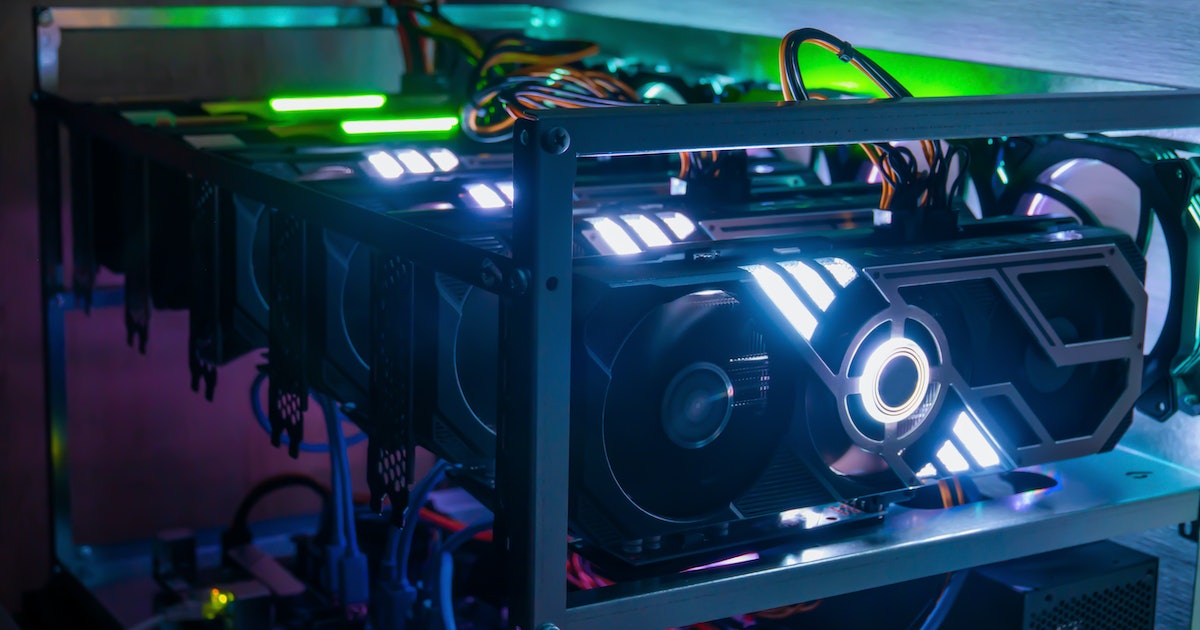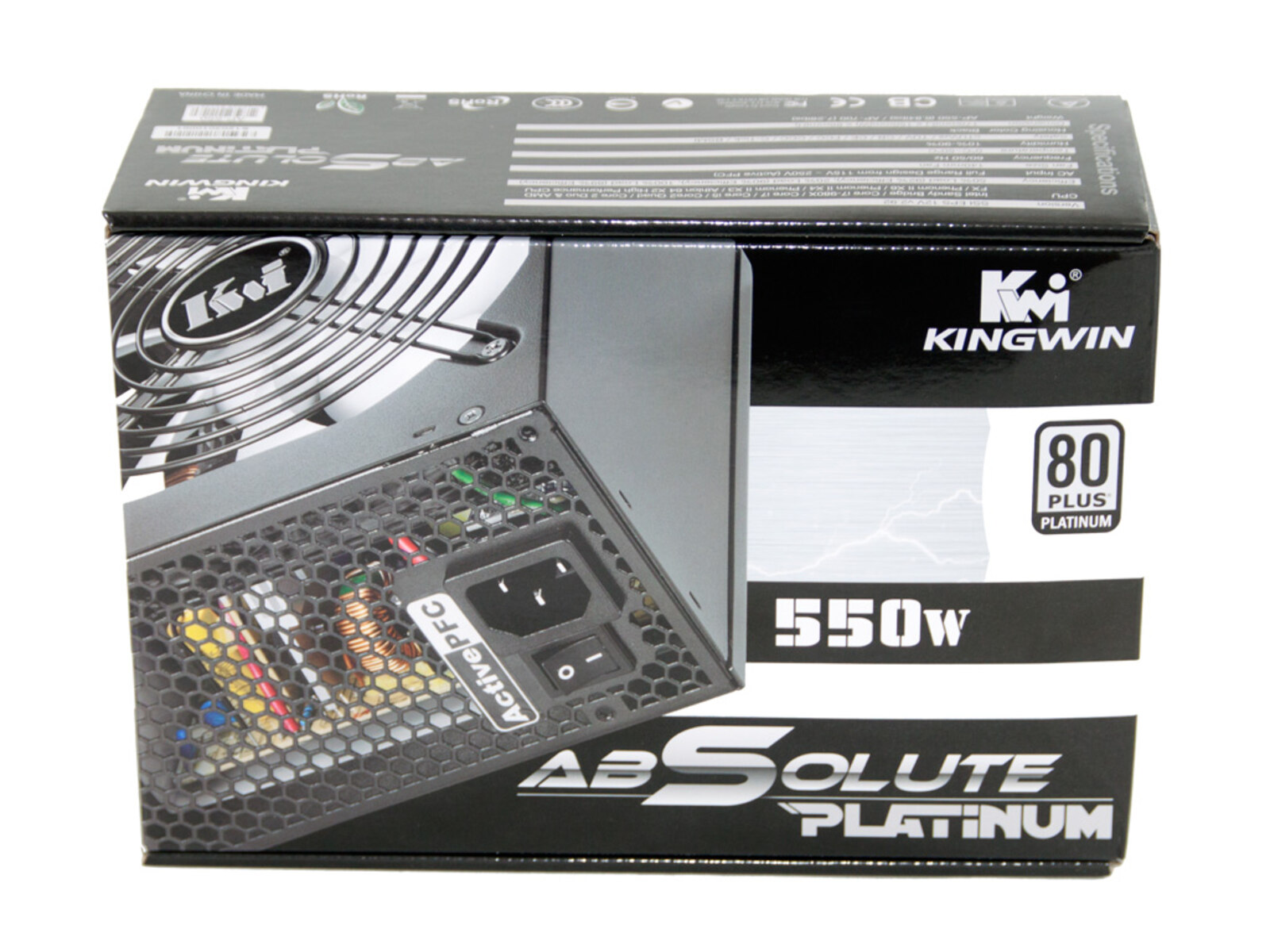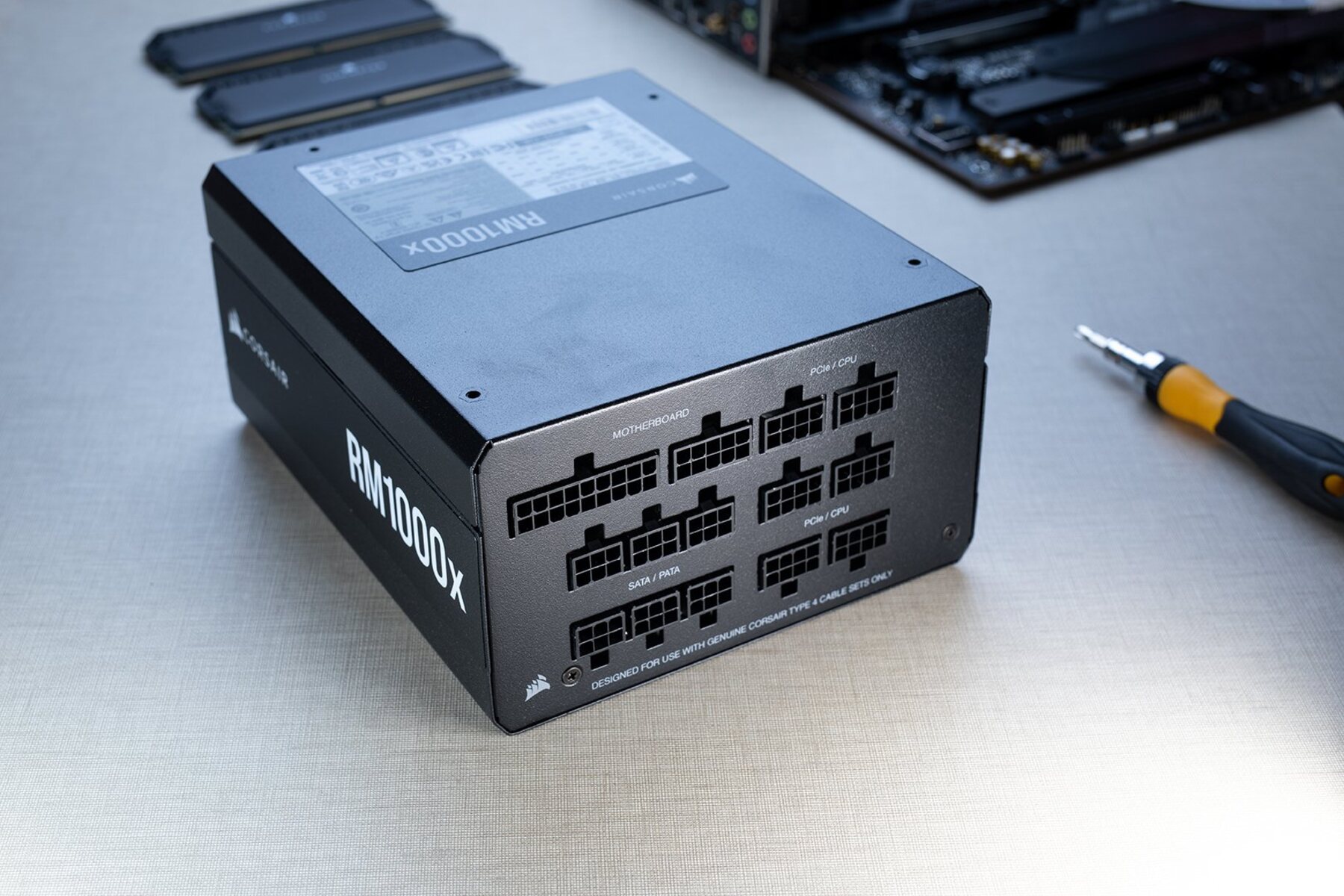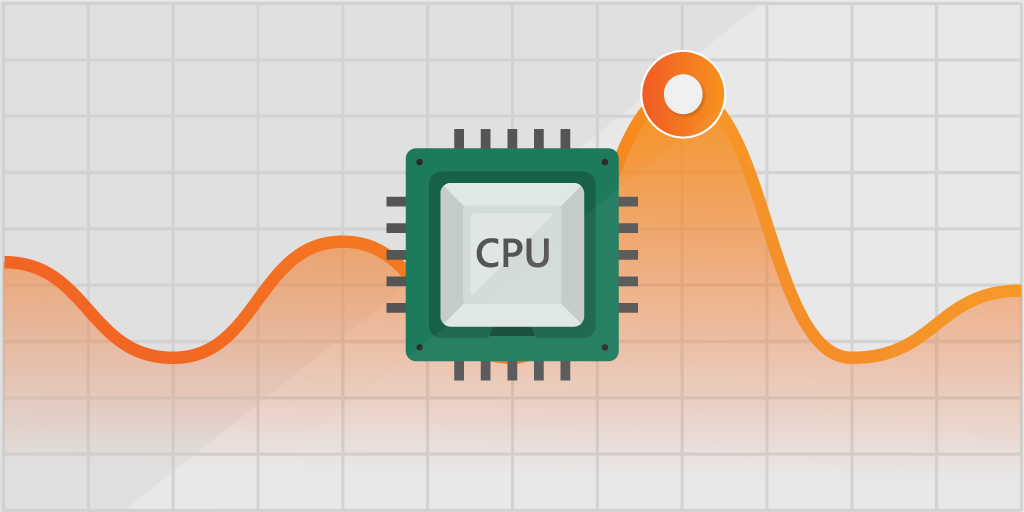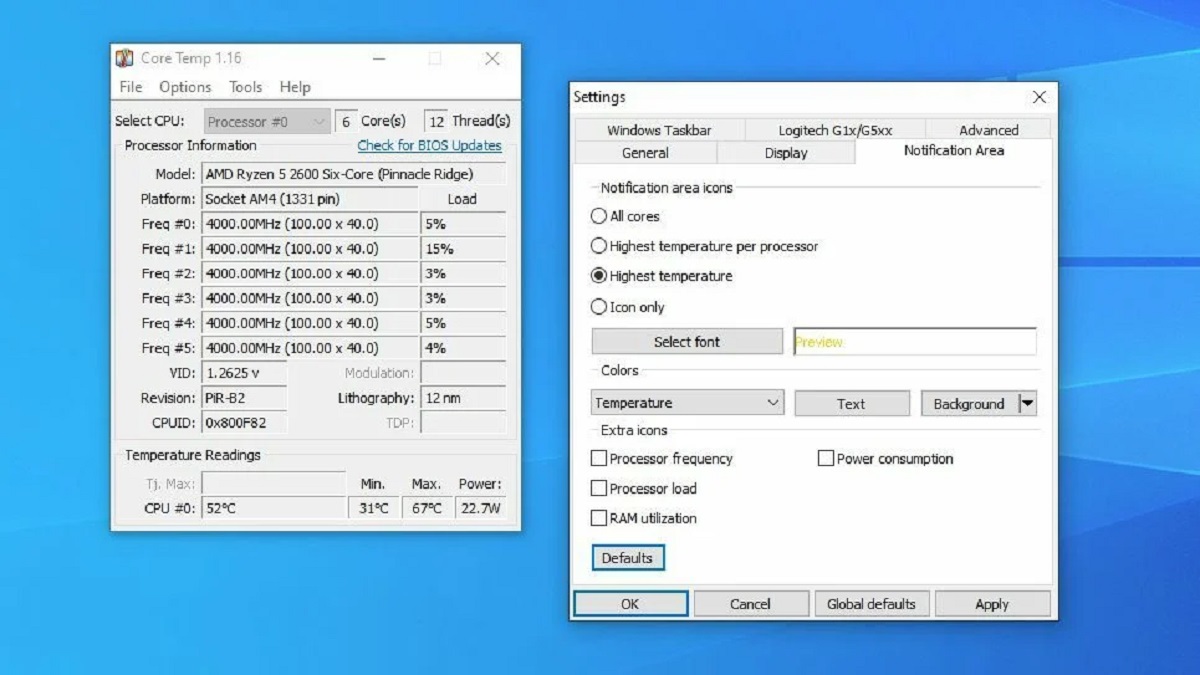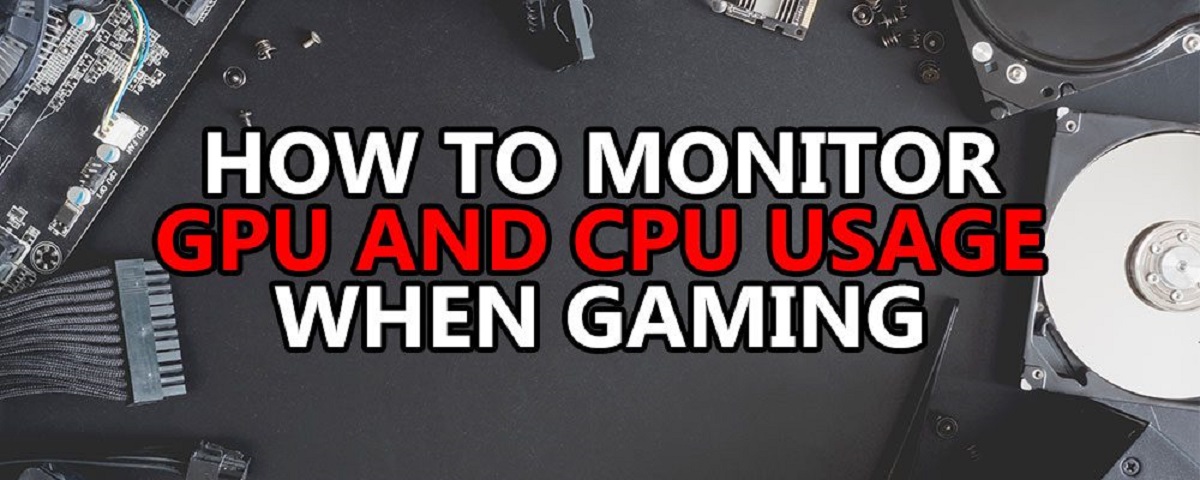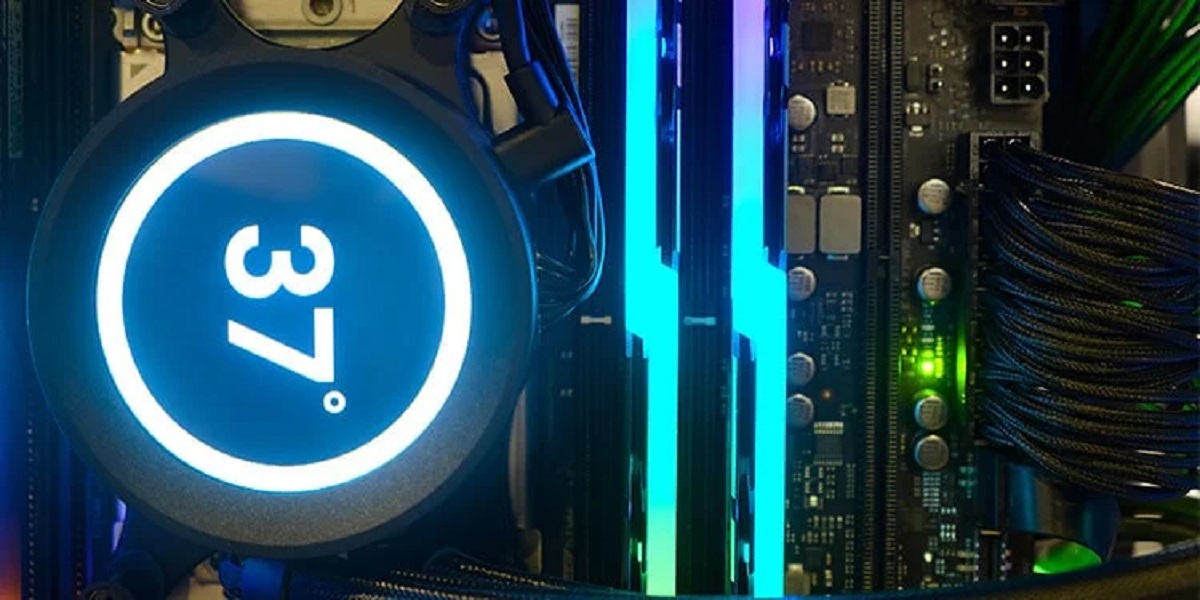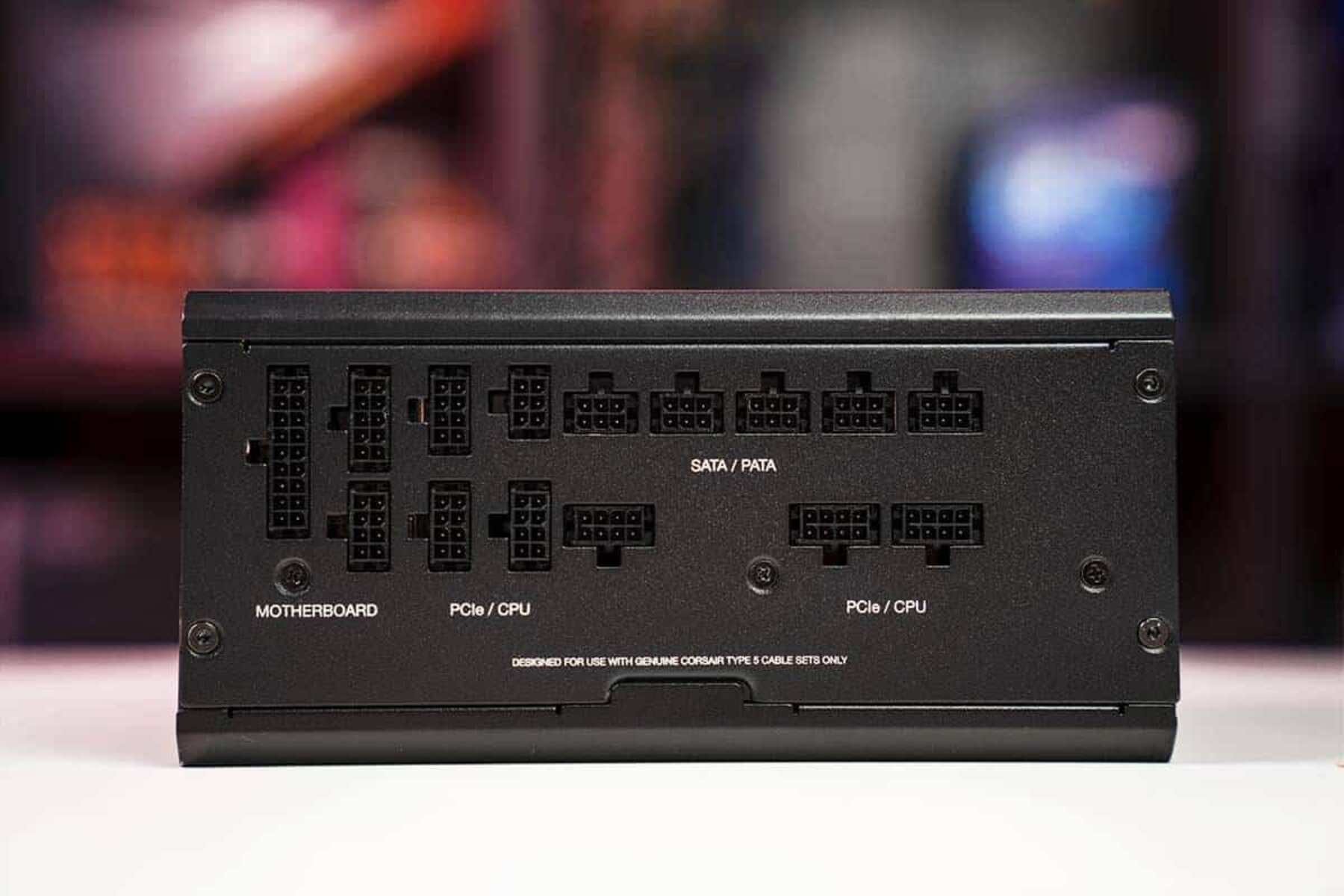Introduction
In today’s fast-paced digital age, many individuals rely heavily on their computers for work, entertainment, and day-to-day tasks. However, encountering unexpected issues, such as a CPU spike of 100%, can be frustrating and disruptive to our productivity. When our computer’s central processing unit (CPU) reaches its maximum capacity, it can lead to sluggish performance, unresponsive applications, and even system crashes.
Understanding the causes of CPU spikes is essential in effectively troubleshooting and resolving this issue. While occasional spikes in CPU usage are normal, consistent or prolonged spikes can indicate underlying problems that need attention. In this article, we will explore common causes of CPU spikes and provide practical solutions to alleviate and prevent them.
Whether you’re a tech-savvy individual or just an everyday computer user, having knowledge about CPU spikes can empower you to take appropriate action and ensure the smooth operation of your computer. By implementing the suggested remedies, you can optimize your system’s performance and restore it to its normal functioning state.
Causes of CPU Spikes
The CPU is the brain of the computer, responsible for executing and managing all tasks and processes. When the CPU usage spikes to 100%, it indicates that the processor is being pushed to its maximum capacity. Several factors can contribute to these spikes, including:
- Background Processes: Background processes running in the background, such as antivirus scans, software updates, or system maintenance tasks, can consume significant CPU resources and cause spikes.
- Insufficient RAM: When the computer lacks sufficient Random Access Memory (RAM), it compensates by using up more CPU resources. This leads to spikes as the processor tries to handle the demanding workload with limited memory.
- Malware or Virus Infection: Malicious software can wreak havoc on your computer’s performance, including causing high CPU usage. Viruses, spyware, or other malware can run stealthily in the background, consuming CPU resources.
- Overheating: Inadequate cooling or a faulty cooling system can cause the CPU temperature to rise, triggering thermal throttling. As a result, the CPU slows down, causing performance issues and potential spikes in CPU usage.
- High Disk Usage: Intensive disk operations, such as large file transfers, software installations, or excessive read/write operations, can monopolize CPU resources and result in spikes.
- Outdated or Corrupted Drivers: Faulty or outdated device drivers can excessively consume CPU resources, leading to spikes. It is crucial to keep drivers up to date to ensure optimal system performance.
- Hardware Issues: Faulty hardware components, such as a failing hard drive or a malfunctioning CPU, can cause sudden spikes in CPU usage. It is essential to diagnose and address hardware issues promptly.
Identifying the underlying causes of CPU spikes is vital in implementing the appropriate solutions. In the following section, we will discuss effective methods to resolve and prevent CPU spikes from occurring. By addressing these causes, you can optimize your computer’s performance and enjoy a more seamless computing experience.
Background Processes
One of the common causes of CPU spikes is the presence of numerous background processes running on your computer. These processes may include automatic system updates, scheduled antivirus scans, or other applications running in the background.
When multiple processes compete for CPU resources simultaneously, it can exceed the processor’s capacity, leading to spikes in CPU usage. To identify and manage background processes, follow these steps:
- Task Manager: Open the Task Manager by pressing Ctrl+Shift+Esc or right-clicking the taskbar and selecting “Task Manager”.
- Processes Tab: In the Task Manager, go to the “Processes” tab.
- CPU Column: Sort the processes by CPU usage by clicking on the “CPU” column. This will display the processes consuming the most CPU resources at the top.
- Resource-Intensive Processes: Identify any resource-intensive processes that are consistently utilizing high CPU usage. These may include software updates, scheduled scans, or unnecessary background applications.
- End Task: If you come across any processes that are not necessary or causing excessive CPU usage, right-click on the process and select “End Task” to terminate it.
- Startup Programs: To prevent unnecessary background processes from starting up every time you boot your computer, disable unwanted programs from the startup list. You can access the startup programs in the Task Manager under the “Startup” tab or in the settings of individual programs.
By monitoring and managing background processes, you can effectively reduce CPU spikes caused by resource-intensive tasks. This will help optimize CPU performance and improve the overall speed and responsiveness of your computer. Remember to exercise caution when ending tasks or disabling startup programs, as some processes may be necessary for the proper functioning of your system.
Insufficient RAM
Insufficient Random Access Memory (RAM) is another common factor that can contribute to CPU spikes. When your computer runs out of available RAM, it compensates by utilizing the CPU to perform memory-related tasks, resulting in increased CPU usage and potential spikes.
To address this issue, you can take the following steps:
- Check RAM Usage: Open the Task Manager by pressing Ctrl+Shift+Esc or right-clicking the taskbar and selecting “Task Manager”. Go to the “Performance” tab and look at the “Memory” section. If the “In Use” value is consistently close to or at maximum capacity, it indicates that you may need more RAM.
- Upgrade RAM: If you have available slots on your motherboard, consider upgrading your RAM by installing additional modules. Check your computer’s specifications to determine the type and maximum amount of RAM it supports. Purchase compatible RAM modules and follow the manufacturer’s instructions to install them properly.
- Close Unnecessary Applications: Closing unnecessary applications can free up RAM and reduce the strain on your CPU. Identify applications that are consuming a significant amount of memory and close them if they are not essential for your current tasks.
- Reduce Startup Programs: Limit the number of programs that automatically start when your computer boots up. These programs consume system resources, including RAM, from the moment your computer starts. Disable unnecessary startup programs to conserve RAM for important tasks.
- Optimize Virtual Memory: Virtual memory is a feature that uses a portion of your hard drive as additional memory when RAM is running low. You can optimize virtual memory settings to improve performance. Go to “Control Panel” > “System” > “Advanced system settings” > “Settings” under the “Performance” section. In the “Advanced” tab, click on “Change” under the “Virtual memory” section and adjust the settings accordingly.
By ensuring that you have sufficient RAM and optimizing its usage, you can reduce the reliance on the CPU for memory-related tasks. This will help alleviate CPU spikes and improve the overall performance and responsiveness of your computer.
Malware or Virus Infection
Malware or virus infections can significantly impact the performance of your computer, including causing high CPU usage and spikes. Malicious software often runs stealthily in the background, consuming system resources and leading to decreased performance. To address malware or virus-related CPU spikes, follow these steps:
- Scan for Malware: Use reputable antivirus software to scan your computer for malware or viruses. Make sure your antivirus software is up to date to effectively detect and remove any malicious threats. Perform a full system scan to identify and eliminate any infections.
- Use Antimalware Tools: In addition to antivirus software, consider using dedicated antimalware tools to detect and remove more specific or persistent threats. There are various antimalware programs available, such as Malwarebytes, which can help in detecting and removing stubborn malware.
- Enable Real-Time Protection: Ensure that real-time protection is enabled in your antivirus software. Real-time protection actively monitors your system and prevents the execution of malicious files, reducing the chances of infection and CPU spikes caused by malware.
- Update Software: Keep your operating system and installed software up to date. Software updates often include important security patches that can plug vulnerabilities and protect your system from malware infections. Enable automatic updates whenever possible to ensure you have the latest protection.
- Exercise Safe Browsing Habits: Be cautious when clicking on links, downloading files, or visiting unfamiliar websites. Avoid downloading files from untrusted sources and be wary of email attachments from unknown senders. Always verify the legitimacy of websites and use secure, encrypted connections (HTTPS) when transmitting sensitive information.
By regularly scanning for and removing malware or viruses, you can prevent unnecessary CPU spikes and maintain the integrity of your computer’s performance. Additionally, practicing safe browsing habits and updating your software can further enhance your system’s security and minimize the risk of future infections.
Overheating
Overheating is a common issue that can cause CPU spikes and affect the overall performance of your computer. When the CPU temperature rises above its optimal range, it can lead to thermal throttling, where the processor automatically reduces its speed to prevent damage. This can result in increased CPU usage and performance degradation. To address overheating and prevent CPU spikes, follow these steps:
- Clean Dust and Debris: Dust and debris accumulation can obstruct airflow and contribute to overheating. Use compressed air or a soft brush to clean the vents, fans, and heatsinks of your computer. Regular cleaning helps maintain proper cooling and prevents thermal issues.
- Ensure Proper Ventilation: Make sure that your computer and its components have sufficient airflow. Place your computer in a well-ventilated area and avoid blocking the vents. Consider using a cooling pad or an external fan to improve airflow and dissipate heat effectively.
- Check Fan Functionality: Ensure that all fans in your computer are functioning correctly. If you notice any unusual noises or lack of airflow, it may be a sign of a faulty fan. Replace any malfunctioning fans to prevent overheating.
- Apply Thermal Paste: Over time, the thermal paste that helps transfer heat from the CPU to the heatsink can degrade. If you notice higher temperatures, consider removing the old thermal paste and applying a fresh layer. Follow the manufacturer’s instructions or seek professional assistance if needed.
- Consider Undervolting: Undervolting your CPU can reduce power consumption and lower temperatures. This process involves adjusting the voltage supplied to the CPU while maintaining stable performance. Several software tools, such as Intel’s XTU or AMD’s Ryzen Master, provide options for undervolting.
- Monitor Temperatures: Keep an eye on your CPU temperatures using software utilities, such as Speedfan or HWMonitor. If temperatures consistently reach high levels during normal usage, it may be necessary to invest in better cooling solutions or consult a professional.
By implementing these measures, you can effectively manage the temperature of your CPU and prevent overheating-related issues, including CPU spikes. Regular maintenance, proper ventilation, and monitoring are key to keeping your system running smoothly and avoiding performance degradation due to heat.
High Disk Usage
High disk usage can lead to CPU spikes as the processor tries to handle intensive read and write operations. Disk-intensive tasks, such as large file transfers, software installations, or background processes, can monopolize CPU resources and cause performance issues. To address high disk usage and minimize CPU spikes, consider the following steps:
- Identify Resource-Intensive Processes: Open the Task Manager by pressing Ctrl+Shift+Esc or right-clicking the taskbar and selecting “Task Manager”. Go to the “Processes” or “Details” tab and sort by the “Disk” column. Identify any processes with high disk utilization that could be causing the spikes.
- Limit Background Operations: Reduce unnecessary background applications and processes that heavily utilize the disk. Examples include file syncing services, torrent clients, or excessive browser downloads. Pause or disable these operations temporarily to alleviate disk usage and reduce CPU spikes.
- Manage Startup Programs: Reduce the number of programs that automatically start when your computer boots up. These programs can contribute to high disk usage as they initialize and perform background tasks. Use the Task Manager or system settings to disable unnecessary startup programs.
- Optimize Windows Search: Windows Search indexing can cause high disk usage, especially after major system changes or updates. Open the Control Panel, go to “Indexing Options,” and modify the locations indexed or limit the number of indexed files. This can help reduce disk activity and subsequently lower CPU usage.
- Defragment Your Hard Drive: Regularly defragmenting your hard drive can improve disk performance and reduce unnecessary disk activity. Use the built-in Windows defragmentation tool or third-party defragmentation software to reorganize data on the disk, improving read and write speeds.
- Upgrade to Solid State Drive (SSD): Consider upgrading your hard drive to an SSD if you are still using a traditional mechanical hard drive. SSDs offer significantly faster read and write speeds, reducing disk-related bottlenecks and CPU spikes. SSDs can greatly enhance overall system performance.
By managing resource-intensive processes, optimizing background operations, and implementing disk-related optimizations, you can minimize high disk usage and the resulting CPU spikes. Regular maintenance and choosing faster storage options can significantly improve your computer’s responsiveness and overall performance.
Outdated or Corrupted Drivers
Outdated or corrupted drivers can contribute to CPU spikes by consuming excessive system resources. Drivers are essential software components that enable communication between hardware devices and the operating system. When drivers are outdated or corrupted, they can cause conflicts, errors, and increased CPU usage. To address driver-related CPU spikes, consider the following steps:
- Update Drivers: Regularly update your drivers to ensure they are compatible with the latest operating system updates and optimized for performance. You can manually update drivers by visiting the manufacturers’ websites for your specific hardware components, or you can use driver update software to automate the process.
- Device Manager: Open the Device Manager by right-clicking the Start button and selecting “Device Manager”. Expand the categories and look for any devices with a yellow exclamation mark. This indicates outdated or corrupted drivers. Right-click on the device and select “Update driver” to search for the latest driver updates.
- Uninstall and Reinstall Drivers: If updating the driver doesn’t resolve the issue, you may need to uninstall the driver and reinstall it. In Device Manager, right-click on the device and select “Uninstall device”. After the driver is uninstalled, restart your computer, and Windows will automatically reinstall the driver.
- Manufacturer’s Support: If you encounter persistent driver-related issues or have difficulty finding compatible drivers, visit the manufacturers’ support websites for assistance. They may provide specific instructions, known issue resolutions, or updated driver versions for your hardware.
- Driver Verifier: In severe cases where driver-related issues persist, you can enable Driver Verifier, a built-in Windows tool that helps identify problematic drivers. Launch the Command Prompt as an administrator and type “verifier” to open the Driver Verifier Manager. Follow the instructions to enable it and let it run for a while. Be cautious as it may cause system instability, so only use it under guidance or if you have technical expertise.
By regularly updating drivers, resolving driver conflicts, and ensuring compatibility with your operating system, you can reduce CPU spikes associated with outdated or corrupted drivers. Keeping your drivers up to date helps maintain system stability, improves performance, and mitigates potential issues that could impact overall CPU usage.
Hardware Issues
Hardware issues can be a significant cause of CPU spikes and overall system instability. Problems with the physical components of your computer, such as a failing hard drive, malfunctioning CPU, or faulty RAM, can lead to increased CPU usage and performance issues. To address hardware-related CPU spikes, consider the following steps:
- Run Hardware Diagnostics: Many computers come with built-in diagnostic tools that can help identify hardware issues. Consult your computer’s user manual or manufacturer’s website to find the appropriate diagnostic utility. Run comprehensive tests to check the health and functionality of your hardware components, including the CPU, RAM, and hard drive.
- Check Hardware Connections: Ensure that all hardware components, such as RAM modules, graphic cards, and data cables, are securely and correctly connected. Loose connections can cause intermittent spikes in CPU usage. Gently reseat components if necessary.
- Replace Faulty Hardware: If diagnostic tests reveal that a particular hardware component is faulty, such as a failing hard drive or defective RAM, it may be necessary to replace the component. Consult a professional technician or contact the manufacturer for guidance on obtaining a suitable replacement.
- Monitor Temperatures: Overheating can be a symptom of a hardware issue, such as a malfunctioning CPU fan or inadequate cooling. Monitor the temperatures of your CPU and other critical components using software utilities or hardware monitoring tools. If temperatures consistently reach excessively high levels, it may indicate a need for repairs or component replacements.
- Seek Professional Help: If you’re unsure about diagnosing or resolving hardware issues on your own, it’s best to consult a professional technician. They have the expertise and tools necessary to identify and resolve complex hardware problems, ensuring accurate repairs and minimizing the risk of further damage.
Addressing hardware issues requires careful diagnosis and, in some cases, technical expertise. By running hardware diagnostics, checking connections, replacing faulty components, monitoring temperatures, and seeking professional help when needed, you can effectively address hardware-related CPU spikes and ensure the smooth operation of your computer.
How to Fix CPU Spikes
CPU spikes can be disruptive to your computer’s performance, causing slowdowns, unresponsiveness, and even system crashes. Fortunately, there are several steps you can take to address and fix CPU spikes. By following these guidelines, you can optimize your system’s performance and prevent future spikes:
- Monitor and Manage Background Processes: Use the Task Manager to identify resource-intensive background processes. Terminate unnecessary processes and limit the number of applications running in the background.
- Upgrade or Add More RAM: Insufficient RAM can lead to CPU spikes. Consider upgrading your RAM or adding more if your system allows it, to provide adequate memory for smooth performance.
- Scan and Remove Malware or Viruses: Run reputable antivirus and antimalware scans to detect and eliminate any malicious software causing CPU spikes.
- Check and Improve Cooling System: Overheating can lead to CPU spikes. Clean dust and debris from vents, ensure proper ventilation, and check the functionality of fans. Consider using cooling pads or additional fans if necessary.
- Optimize Disk Usage: High disk usage can contribute to CPU spikes. Identify resource-intensive processes and limit unnecessary disk operations.
- Update or Reinstall Drivers: Outdated or corrupted drivers can cause CPU spikes. Update drivers to their latest versions or reinstall them if necessary.
- Verify and Address Hardware Issues: Hardware problems can lead to CPU spikes. Run hardware diagnostics, check connections, replace faulty components, and monitor temperatures to ensure the hardware is working properly.
Implementing these solutions can help alleviate CPU spikes and improve overall system performance. Regular maintenance, software updates, and practicing safe computing habits are key to ensuring a smooth and efficient computer experience.
Monitor and Manage Background Processes
Background processes running on your computer can consume valuable CPU resources and contribute to CPU spikes. These processes may include automatic system updates, scheduled antivirus scans, software maintenance tasks, or unnecessary applications running in the background. Monitoring and managing these processes is an effective way to address CPU spikes. Here’s how you can do it:
- Task Manager: Open the Task Manager by pressing Ctrl+Shift+Esc or right-clicking the taskbar and selecting “Task Manager”.
- Processes Tab: In the Task Manager, navigate to the “Processes” tab to view the running processes.
- Sort by CPU Usage: Click on the “CPU” column header to sort the processes based on CPU usage. This will help you identify which processes are consuming the most CPU resources.
- Identify Resource-Intensive Processes: Look for processes that consistently use a high percentage of CPU resources. These are the processes that can potentially cause CPU spikes.
- End Unnecessary Processes: Right-click on the resource-intensive processes and select “End Task” to terminate them. Exercise caution and only close processes that are not essential for your system’s operation.
- Disable Startup Programs: Some applications automatically start when you boot up your computer, running in the background and consuming CPU resources. To prevent unnecessary background processes, disable startup programs. You can do this in the Task Manager or in the settings of the individual applications.
- Benchmark and Monitor: Use benchmarking tools to measure CPU performance and monitor CPU usage over time. This can help you identify any abnormal spikes and track the effectiveness of your adjustments.
By monitoring and managing background processes, you can optimize CPU performance and reduce the likelihood of CPU spikes. Remember to exercise caution when terminating processes, as some may be necessary for the proper functioning of your system or specific applications. Maintaining a healthy balance between necessary background processes and efficient CPU usage will result in a smoother and more responsive computing experience.
Upgrade or Add More RAM
Insufficient Random Access Memory (RAM) can often be a cause of CPU spikes. When the available RAM is limited, the CPU needs to work harder to handle the demanding workload, resulting in increased CPU usage and potential spikes. To address this issue, upgrading or adding more RAM to your system can significantly improve its performance. Here are the steps to consider:
- Check Current RAM Configuration: Determine how much RAM is currently installed on your computer. You can do this by accessing the “System” settings on your computer, or by checking the documentation that came with your system.
- Identify RAM Compatibility: Check the compatibility of your system with additional RAM. Refer to the specifications provided by your computer’s manufacturer to find the type, speed, and capacity of RAM that your system supports.
- Purchase and Install Compatible RAM: Once you have identified the compatible RAM, you can purchase it from reputable vendors. Make sure to handle the RAM modules carefully to avoid any damage. Follow the manufacturer’s instructions to install the RAM properly into the available slots on your motherboard.
- Verify RAM Recognition: After installing the new RAM, restart your computer and check if the system recognizes the additional memory. You can verify this by accessing the “System” settings or using diagnostic software to view the updated RAM configuration.
- Test Performance: Run your computer under normal usage and monitor the CPU usage. With the increased RAM capacity, you should notice a decrease in CPU spikes and improved overall performance. Benchmarking tools can help you measure and compare the performance before and after the RAM upgrade.
- Consider Virtual Memory: If upgrading physical RAM is not immediately possible, you can optimize the use of virtual memory. Virtual memory uses a portion of your hard drive as additional memory when the physical RAM is running low. Although virtual memory is slower than physical RAM, it can help mitigate the impact of limited RAM on CPU spikes.
By upgrading or adding more RAM, you provide your system with additional memory to handle the workload more efficiently. This reduces the strain on the CPU, decreases CPU spikes, and enhances overall system performance. Make sure to choose compatible RAM and install it correctly to enjoy the maximum benefits of the increased memory capacity.
Scan and Remove Malware or Viruses
Malware or virus infections can significantly impact the performance of your computer, including causing high CPU usage and spikes. These malicious software programs can run undetected in the background, consuming system resources and leading to decreased performance. It is crucial to regularly scan your system for malware or viruses and take appropriate actions to remove them. Here are the steps to scan and remove malware or viruses:
- Use Reputable Antivirus Software: Install reputable antivirus software on your computer. Make sure the software is up to date with the latest virus definitions to effectively detect and remove any malicious threats. There are numerous antivirus options available, both free and paid, that offer real-time protection and regular scanning features.
- Perform Full System Scan: Run a full system scan to thoroughly examine all files, folders, and processes on your computer. This scan might take some time depending on the size of your hard drive and the number of files. Allow the antivirus software to quarantine or remove any detected malware or viruses.
- Use Dedicated Antimalware Tools: Consider using dedicated antimalware tools in addition to your antivirus software to detect and remove more specific or persistent threats. Antimalware programs like Malwarebytes are designed to identify and eliminate stubborn malware that might go undetected by traditional antivirus software.
- Enable Real-Time Protection: Ensure that the real-time protection feature is enabled in your antivirus software. Real-time protection actively monitors your system and prevents the execution of known malicious files, reducing the chances of becoming infected and experiencing CPU spikes caused by malware.
- Update Software Regularly: Keep your operating system, antivirus software, and other installed programs up to date. Software updates often include important security patches that address vulnerabilities and protect your system from malware infections. Enable automatic updates whenever possible to ensure you’re using the latest protection.
- Exercise Safe Browsing Habits: Practicing safe browsing habits can greatly reduce the risk of malware infections. Be cautious when clicking on links, downloading files, or visiting unfamiliar websites. Avoid downloading files from untrusted sources and be suspicious of email attachments from unknown senders. Always verify the legitimacy of websites and use secure, encrypted connections (HTTPS) when transmitting sensitive information.
Regularly scanning for and removing malware or viruses is crucial to maintaining a secure and high-performing system. By using reputable antivirus software, ensuring real-time protection, and following safe browsing practices, you can minimize the risk of malware infections, CPU spikes, and other performance issues caused by malicious software.
Check and Improve Cooling System
Overheating is a common contributor to CPU spikes and performance issues. When the CPU temperature rises above its optimal range, it can lead to thermal throttling, where the processor automatically reduces its speed to prevent damage. To address overheating and prevent CPU spikes, it is important to check and improve your computer’s cooling system. Here are the steps to consider:
- Clean Dust and Debris: Dust and debris accumulation can obstruct airflow and contribute to overheating. Use compressed air or a soft brush to carefully clean the vents, fans, and heatsinks of your computer. Regular cleaning helps maintain proper cooling and prevents thermal issues.
- Ensure Proper Ventilation: Make sure that your computer and its components have sufficient airflow. Place your computer in a well-ventilated area and ensure that the vents are not blocked by objects or dust. Consider using a cooling pad or an external fan to improve airflow and dissipate heat effectively.
- Check Fan Functionality: Faulty or malfunctioning fans can result in inadequate cooling. Check that all fans are spinning properly and listen for any unusual noises. If you notice any issues, such as a fan not spinning or making grinding noises, consider replacing the fan to ensure optimal cooling performance.
- Apply Thermal Paste: Over time, the thermal paste that helps transfer heat from the CPU to the heatsink can degrade. If you notice higher temperatures or poor heat transfer, consider removing the old thermal paste and applying a fresh layer. Follow the manufacturer’s instructions or consult a professional if needed.
- Use Cooling Software: Some computers come with built-in cooling software that allows you to adjust fan speeds and customize cooling profiles. Explore the options in your system’s BIOS or use third-party cooling software to optimize fan settings and ensure efficient cooling.
- Monitor Temperatures: Utilize software utilities or hardware monitoring tools to monitor the temperatures of your CPU and other critical components. Keep an eye on temperature readings during normal usage and particularly during resource-intensive tasks. If temperatures consistently reach high levels, it may indicate a need for improved cooling or maintenance.
By checking and improving your cooling system, you can mitigate the risk of CPU spikes caused by overheating. Proper airflow, clean components, functioning fans, and appropriate thermal management will help maintain optimal temperatures and prevent performance issues related to excessive heat.
Optimize Disk Usage
High disk usage can contribute to CPU spikes as the processor handles intensive read and write operations. Disk-intensive tasks such as large file transfers, software installations, or excessive read/write operations can monopolize CPU resources and cause performance issues. To optimize disk usage and reduce CPU spikes, consider the following steps:
- Identify Resource-Intensive Processes: Open the Task Manager by pressing Ctrl+Shift+Esc or right-clicking the taskbar and selecting “Task Manager”. Go to the “Processes” or “Details” tab and locate processes with high disk utilization. These software applications could be contributing to the CPU spikes.
- Limit Background Disk Operations: Reduce unnecessary background applications and processes that heavily use the disk. Examples include file syncing services, torrent clients, or excessive browser downloads. Temporarily pause or disable these operations to relieve disk usage and reduce CPU spikes.
- Manage Startup Programs: Limit the number of programs that automatically start when your computer boots up. These programs consume system resources, including the disk, right from the moment your computer starts. Use the Task Manager or system settings to disable unnecessary startup programs.
- Optimize Windows Search Indexing: Windows Search indexing can cause high disk activity, especially after major system changes or updates. Open the Control Panel, go to “Indexing Options,” and modify the locations indexed or limit the number of indexed files. This can reduce disk activity and subsequently lower CPU usage.
- Defragment Your Hard Drive: Regularly defragmenting your hard drive can improve disk performance and reduce unnecessary disk activity. The built-in Windows defragmentation tool or third-party defragmentation software can reorganize data on the disk, improving read and write speeds.
- Consider Using SSD: Consider upgrading your storage drive to a Solid State Drive (SSD) if you are using a traditional mechanical hard drive. SSDs offer significantly faster read and write speeds and can reduce disk-related bottlenecks that contribute to CPU spikes. SSDs can greatly enhance overall system performance.
By managing resource-intensive processes, optimizing background disk operations, and implementing disk-related optimizations, you can minimize high disk usage and the resulting CPU spikes. Regular maintenance and choosing faster storage options can significantly improve your computer’s responsiveness and overall performance.
Update or Reinstall Drivers
Outdated or corrupted drivers can cause CPU spikes by consuming excessive system resources. Drivers serve as critical software components that facilitate communication between hardware devices and the operating system. When drivers are outdated or corrupted, they can lead to conflicts, errors, and increased CPU usage. To address driver-related CPU spikes, follow these steps:
- Check for Updated Drivers: Regularly check for driver updates from the manufacturers’ websites. Visit the support section of the website for each hardware component or use driver update software to automate the process. Updated drivers often address bugs, improve compatibility, and optimize resource usage.
- Device Manager: Open the Device Manager by right-clicking the Start button and selecting “Device Manager”. Expand the categories and look for any devices with a yellow exclamation mark. This indicates outdated or corrupted drivers. Right-click on the device, select “Update driver,” and follow the prompts to search and install the latest driver updates.
- Uninstall and Reinstall Drivers: If updating the driver doesn’t resolve the issue, you may need to uninstall the driver and reinstall it. In Device Manager, right-click on the device and select “Uninstall device”. After the driver is uninstalled, restart your computer, and Windows will automatically reinstall the driver. This process can help resolve conflicts or issues with existing drivers.
- Manufacturer’s Support: If you encounter persistent driver-related issues or have difficulty finding compatible drivers, visit the manufacturers’ support websites for assistance. They may provide specific instructions, known issue resolutions, or updated driver versions tailored to your hardware.
- Roll Back to Previous Drivers: If you recently updated a driver and started experiencing CPU spikes, it is possible that the new driver is causing the issue. In Device Manager, right-click on the device, select “Properties,” go to the “Driver” tab, and click on “Roll Back Driver” if available. This reverts to the previous driver version and can help alleviate any compatibility or performance issues.
By regularly updating drivers, resolving conflicts, and ensuring compatibility with your operating system, you can reduce CPU spikes caused by outdated or corrupted drivers. Keeping drivers up to date helps maintain system stability, improves performance, and mitigates potential issues that could impact overall CPU usage.
Verify and Address Hardware Issues
Hardware issues can be a significant cause of CPU spikes and overall system instability. Problems with the physical components of your computer, such as a failing hard drive, malfunctioning CPU, or faulty RAM, can lead to increased CPU usage and performance issues. To address hardware-related CPU spikes, consider the following steps:
- Run Hardware Diagnostics: Many computers come with built-in diagnostic tools that can help identify hardware issues. Consult your computer’s user manual or manufacturer’s website to find the appropriate diagnostic utility. Run comprehensive tests to check the health and functionality of your hardware components, including the CPU, RAM, and hard drive.
- Check Hardware Connections: Ensure that all hardware components, such as RAM modules, graphic cards, and data cables, are securely and correctly connected. Loose connections can cause intermittent spikes in CPU usage. Gently reseat components if necessary.
- Replace Faulty Hardware: If diagnostic tests reveal that a particular hardware component is faulty, such as a failing hard drive or defective RAM, it may be necessary to replace the component. Consult a professional technician or contact the manufacturer for guidance on obtaining a suitable replacement.
- Monitor Temperatures: Overheating can be a symptom of a hardware issue, such as a malfunctioning CPU fan or inadequate cooling. Monitor the temperatures of your CPU and other critical components using software utilities or hardware monitoring tools. If temperatures consistently reach excessively high levels, it may indicate the need for repairs or component replacements.
- Seek Professional Help: If you’re unsure about diagnosing or resolving hardware issues on your own, it’s best to consult a professional technician. They have the expertise and tools necessary to identify and resolve complex hardware problems, ensuring accurate repairs and minimizing the risk of further damage.
Addressing hardware issues requires careful diagnosis and, in some cases, technical expertise. By running hardware diagnostics, checking connections, replacing faulty components, monitoring temperatures, and seeking professional help when needed, you can effectively address hardware-related CPU spikes and ensure the smooth operation of your computer.
Conclusion
Dealing with CPU spikes can be a frustrating experience, but understanding the various causes and implementing appropriate solutions can help you overcome this issue and optimize your computer’s performance. By addressing factors such as background processes, insufficient RAM, malware or virus infections, overheating, high disk usage, outdated or corrupted drivers, and hardware issues, you can significantly reduce or even eliminate CPU spikes.
Monitoring and managing background processes, upgrading RAM, scanning and removing malware or viruses, checking and improving the cooling system, optimizing disk usage, updating or reinstalling drivers, and verifying and addressing hardware issues are all key steps towards resolving CPU spikes. Performing these actions ensures that your computer operates smoothly, efficiently utilizing its resources without overburdening the CPU.
It is important to note that maintaining a healthy and optimized system requires regular maintenance and periodic check-ups. Ensuring your software is up to date, practicing safe browsing habits, and keeping your hardware clean and well-maintained are key components of a reliable and high-performing computer.
By following the guidelines provided in this article, you can diagnose, address, and prevent CPU spikes, allowing you to enjoy a smoother and more efficient computing experience. Remember that each system is unique, and the specific solutions may vary based on your hardware and software configurations. If you encounter persistent issues or complex situations, consulting a professional technician can provide further assistance in resolving CPU spikes and optimizing your computer’s performance.









